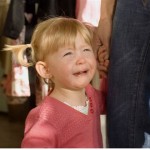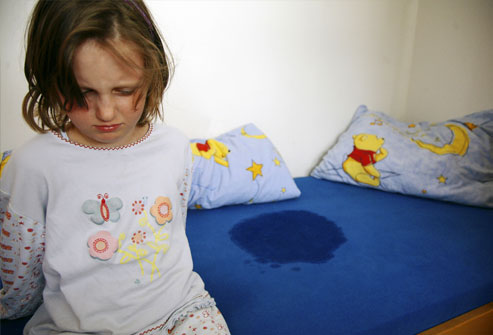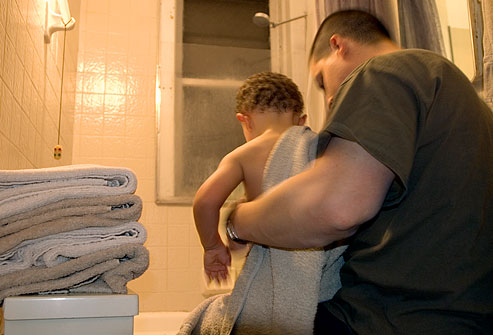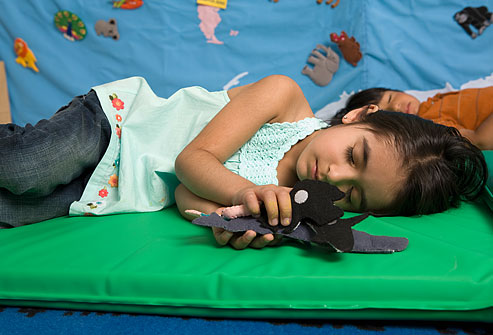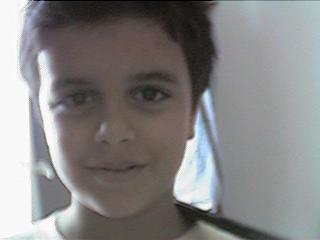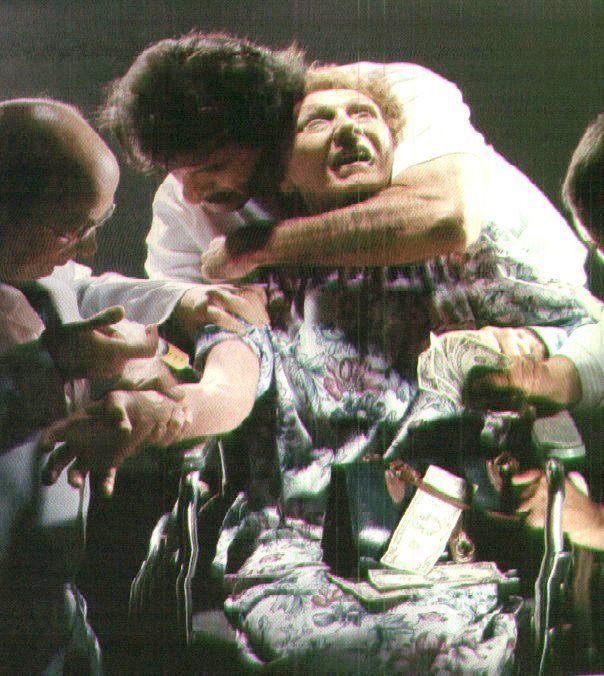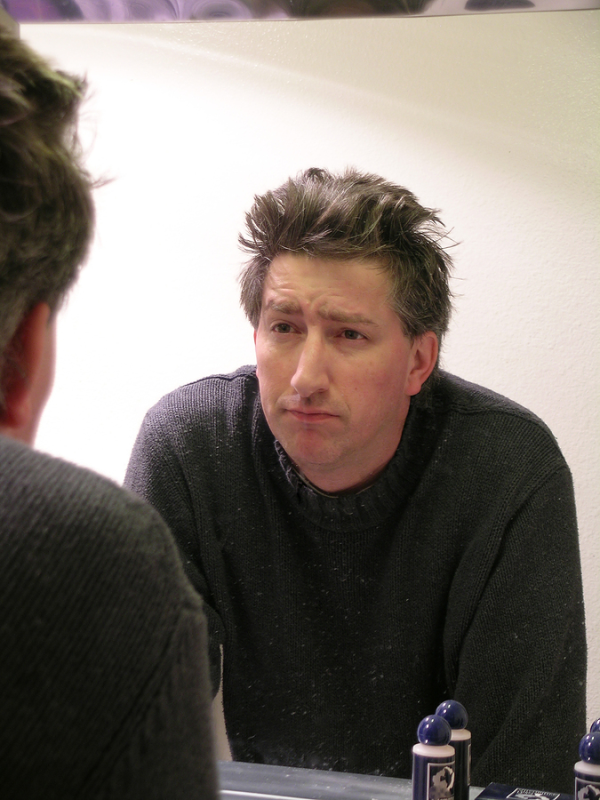Electroconvulsive Therapy Review Guidelines
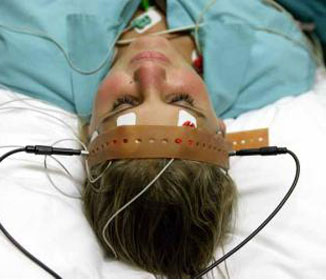
The following guidelines are intended for use by provider hospitals/facilities (general and private) for the development, revision and review of electroconvulsive therapy (ECT) practices. These guidelines are designed to identify critical areas regarding ECT administration and are based on the American Psychiatric Association’s recommendations presented in the second edition of The Practice of Electroconvulsive Therapy: Recommendations for Treatment, Training, and Privileging (2001). These guidelines are also intended to assist providers in developing key aspects of their ECT policies and procedures manual. Since these guidelines are not intended to be all inclusive, the APA’s Practice of Electroconvulsive Therapy should be referred to when a specific subject or topic is under review or in question. APA page numbers are referenced throughout the guidelines to assist in locating information on a particular subject.
The Office of Mental Health staff will use these guidelines in review of ECT practices. These guidelines are not intended to establish regulatory standards for the administration of ECT. Failure to address or adhere to any provision in the guidelines will not necessarily result in regulatory citations, agency actions, or other sanctions. OMH’s expectation is that these guidelines will foster the delivery of high quality ECT services.
- Use of Electroconvulsive Therapy
- The decision to administer ECT is based on an evaluation of the risks and benefits for the individual patient and involves a combination of factors, including psychiatric diagnosis, type and severity of symptoms, prior treatment history and response, identification of possible alternative treatment options, and consumer preference. (APA pp. 5-7)
Guidelines: Providers should identify how and who determines whether to use ECT as a primary or secondary treatment.
ECT may be considered as a primary treatment (or first-line treatment) for persons exhibiting syndromes such as: severe major depression, acute mania, mood disorders with psychotic features, and catatonia. A decision to use ECT as the primary therapy should be based on an evaluation of the nature and the severity of acute symptoms in conjunction with an evaluation of risks and benefits. ECT may be the initial treatment of choice when a rapid or a higher probability of response is necessary. ECT may also be considered as a primary treatment when there is a history of good response to ECT treatment and/or poor response to alternate treatments during prior episodes.
ECT is most often used as a secondary treatment when a patient has shown insufficient improvement with prescribed treatment(s), which usually includes pharmacotherapy. In addition to lack of substantial clinical response, other reasons to use ECT include, intolerance to side effects of medication or other treatments, deterioration in condition, or appearance of suicidality or pronounced lethargy. In the context of referral for ECT, patients who have not responded to psychotherapy alone should not be considered as having a treatment resistant mental illness – regardless of diagnosis.
-
- ECT is generally used to treat several principal diagnostic indications including major depression, mania, and schizophrenia and may be used for other diagnostic indications including psychiatric syndromes associated with medical conditions and medical disorders. (APA pp. 8-22)
Guidelines: Providers should identify principal diagnostic indications and other diagnostic indications for the use of ECT. When identifying persons for possible ECT, a current psychiatric evaluation and diagnosis should be part of the required procedures. Even when no mental illness is diagnosed, other diagnostic indications may include medical disorders such as: Parkinson’s disease, intractable seizure disorder and neuroleptic malignant syndrome.
-
- ECT can be administered to persons with severe medical conditions. Although some medical conditions may alter the risk of treatment, there are no “absolute” medical contraindications to the use of ECT. In some medically ill patients ECT may be preferred because of its efficacy and safety profile. (APA pp. 27-29)
Guidelines: Providers should assure review of medical conditions that may substantially increase risk during the delivery of ECT. A medical history and physical examination are essential before prescribing of ECT to determine risk factors and minimize risks. Factors that significantly increase risk may include: unstable or severe cardiovascular conditions, aneurysm or vascular malformation, increased intracranial pressure, cerebral infarction, pulmonary insufficiency and a patient medical status rated as ASA level 4 or 5. This list is not all-inclusive, and ECT providers should be familiar with the range of medical conditions that may enhance risks. Approaches to minimizing risks may include modifications in patient management, changes in patient preparation or adjustments in treatment delivery technique.
-
- The decision to administer ECT to special populations of patients should include an appraisal of specific risks and benefits for the individual patient. It should also address the type, likelihood, and potential persistence of adverse effects as well as the possible impact of ECT on the patient’s medical status and current medical treatments. Special populations identified by the APA include:
Coexisting medical illnesses (e.g. neurologic and cardiovascular disorders) and their treatment may affect both the likelihood of response and the risks of ECT. It is critical to recognize potential interactions among coexisting medical conditions, physiologic events associated with anesthesia, electrical stimulation, and induced seizure activity when proposing and administering ECT.
Elderly patients may receive ECT regardless of age. The efficacy of treatment does not diminish with advancing age. ECT may have a lower risk of complications than some forms of pharmacotherapy in the elderly.
Pregnant women and nursing mothers may receive ECT during all trimesters of pregnancy, puerperium and nursing. ECT may be less risky than alternate pharmacologic treatment or non-treatment of mental illness during pregnancy.
Children and Adolescents should receive ECT only when it is evident that other viable treatments have been ineffective or if other treatments cannot be administered safely. (APA pp. 31-52)
Guidelines: Providers should address special populations of patients who may receive ECT treatment. OMH recognizes that hospitals/facilities may provide ECT services to other special populations (e.g. mental retardation/developmental disabilities) in addition to the ones specifically identified by the APA. Facilities providing ECT to a special population should develop policies reflecting specific treatment considerations for those groups of individuals.
Providers should require an evaluation of a patient’s condition prior to ECT to determine whether they should be considered as a member of a special population. For patients who are identified as belonging to a special population, a tailored risk/benefit assessment should be completed by appropriate medical professionals. Pregnant patients should receive an obstetric consultation prior to ECT. Nursing mothers should be informed of the effect medications may have on breast milk and what steps may be taken to decrease infant exposure. It is recommended that for children under the age of 13, concurrence by two consultants, at least one being independent, who are experienced in the treatment of children be obtained before ECT is administered .
Any modifications to the standard ECT treatment regimen must be clinically documented at the time of ECT. For example, persons with substantial symptoms of neurologic disorders (e.g. NMS) or persons at risk of hyperkalemia may require nondepolarizing muscle relaxants instead of succinylcholine and persons with porphyria should receive a nonbarbiturate anesthetic.
Policies and Procedures: Policies and procedures should describe how ECT will be used in treatment; assure assessment of medical risk and current psychiatric evaluation; and identify treatment considerations for special populations generally served by the provider.
- Staffing
- At each facility offering ECT, a psychiatrist privileged to administer ECT should be designated as having the responsibility for developing, updating and overseeing compliance with policies and procedures for ECT, including issues related to staffing, equipment, and supplies. (APA pg. 109)
Guidelines: Providers should designate a psychiatrist as the coordinator of ECT services. The coordinator of ECT services should be a psychiatrist privileged to administer ECT and should have clearly defined duties and responsibilities.
-
- An ECT treatment team should be appropriately trained and consist of at least an ECT privileged psychiatrist, an anesthesia provider, and a recovery nurse. In addition, an ECT treatment nurse or assistant in the treatment room is recommended. Treatment facilities should ensure that the ECT psychiatrist is privileged by the facility to perform ECT. (APA pp. 109-112, 241-243)
Guidelines: Providers should identify the composition of the ECT treatment team and should include minimum staffing requirements. The use of the term “team” does not imply that staff members have to be identified by name. Instead the designation of “team” members should be identified by functional titles (e.g. ECT Nurse (RN)),since it is understood some flexibility in staffing may be necessary. Although team members may not always be the same staff, it is expected that all staff providing ECT will be properly trained in their disciplines to provide ECT. Since there are no national standards regarding training, qualifications and privileging, each treatment facility should indicate required training and qualifications of all members. Providers should describe the process used to privilege physicians administering ECT.
Anesthesia providers should be, at minimum, privileged to deliver general anesthesia and may include anesthesiologists or nurse anesthetists. If a nurse anesthetist is used to provide anesthesia, the treatment facility should establish policies and procedures assuring the timely on-site availability of an anesthesiologist as required under NYCRR Title 10 Part 405.13. Patients identified as high risk should only be treated by a qualified anesthesiologist who is experienced in ECT procedures. Policies and procedures should clearly identify the process used to determine high-risk patients. The Office of Mental Health recommends that free standing facilities (e.g. Article 31 private psychiatric hospitals, Article 28 licensed diagnostic and treatment centers) only use certified anesthesiologists.
Since the Office of Mental Health advocates that the ECT psychiatrist not administer both anesthesia and ECT, the facility should develop an ECT administration plan which clearly describes the process. The plan should be sent to OMH’s Chief Medical Officer for review and approval.
-
- Responsibilities of the ECT treatment team should be detailed in the ECT policy and procedure manual. (APA pp. 113-115).
Guidelines: Each facility is responsible for designating required tasks to the appropriately qualified staff. These responsibilities should be clearly defined in the policy and procedure manual. It is suggested that specific responsibilities be designated to treatment team members as follows:
ECT Psychiatrist – As the treatment team member with the most comprehensive experience and training in ECT, the ECT psychiatrist should maintain overall responsibility for the administration of the treatment. The ECT psychiatrist’s responsibilities include: 1) assessing the patient before beginning ECT, 2) ensuring that all pre-ECT evaluations have been completed, 3) determining that ECT is still indicated, 4) ensuring that ECT is delivered in accordance with policies and procedures, 5) instituting modifications in ECT as indicated, and 6) ensuring proper documentation of evaluations and treatment results.
Anesthesia Provider – Responsibilities generally include: 1) managing the airway, 2) administering ultra-brief anesthetic and relaxant agents, 3) monitoring cardiopulmonary functioning, and 4) managing acute adverse events.
Recovery Nurse – This person is a registered nurse whose responsibilities include monitoring of vital signs, pulse oximetry, ECG, and mental status, 2) administering oxygen and intravenous fluids, 3) provision of suctioning, and 4) management of postictal disorientation and agitation.
ECT Nurse or Assistant – This person is usually an RN but may be an LPN or an assistant with ECT training and experience. Responsibilities should be consistent with training and clinical competence and generally include assisting the ECT psychiatrist and the anesthesia provider with duties such as: 1) coordinating treatment logistics, 2) readying the treatment area for ECT, including checking the proper functioning of equipment (e.g. suction, physiological monitoring equipment, etc.), 3) assisting patients to and from treatment area, 4) applying stimulus and monitoring electrodes, and monitoring vital signs. Additional duties for ambulatory ECT patients may include assessing patients before each ECT treatment and delivering post recovery care.
Policies and Procedures: Policies and procedures should identify the duties and qualifications of the psychiatrist designated as coordinator of ECT services; and identify staff members by functional title who will constitute an ECT treatment team and delineate staff responsibilities. When an anesthesiologist is not routinely included on the ECT treatment team, policies and procedures should provide for the availability of an anesthesiologist on-site at the facility and for including an anesthesiologist on the team during treatment of high risk patients.
- Treatment Site and Equipment
- The treatment site should be conducive to the delivery of ECT treatment for both the patient and staff. (APA pg. 117)
Guidelines: The treatment site should include separate areas for waiting, treatment, and recovery. If outpatient ECT treatment is provided, there should also be space identified for patients and those accompanying the patient during the post recovery period. Policies should identify where ECT related equipment and supplies are stored within the treatment site. Staff responsibilities regarding the treatment site should be included in the policy and procedure manual. Patient medical records should be readily accessible to the ECT treatment team during treatment.
Since ECT differs from other “typical” operative procedures, hospitals who designate general operating rooms, surgical suites, and/or common recovery rooms for ECT treatment should identify any additional equipment that is specific to the delivery of ECT and should be available during treatment. When such treatment sites are used, providers should delineate any additional steps that may be needed to assure patient privacy. In this section, as well as in sections 3.b, 3.c and 3.d, providers may reference existing practices for these treatment sites, but should also specifically address aspects unique to ECT.
-
- The treatment site should contain sufficient quantities of required and optional equipment, medications and supplies to administer ECT safely. (APA pg. 118)
Guidelines: Providers should identify the equipment to be available in administering ECT. Equipment should be available in both the ECT treatment area and the recovery area to provide suction; deliver intermittent positive-pressure oxygen; monitor vital signs, including cardiac rhythm and hemoglobin oxygen saturation. The treatment area should also contain equipment for intubation, seizure induction (brief pulse waveform ECT device), physiologic monitoring including EEG, and resuscitation. The recovery area should also contain ECG monitoring and pulse oximetry devices. More specifically, standard equipment in the treatment area includes: 1) stretcher or bed with side rails and the capacity to raise both the head and feet, 2) automatic or manual blood pressure monitoring device, 3) stethoscope, 4) ECT device with built-in EEG monitoring, 5) ECG monitoring equipment, 6) sphygmomanometer cuff to permit detection of ictal motor duration, 7) pulse oximeter, 8) oxygen delivery system, 8) suction apparatus, 9) intubation set for managing airways, and 10) reflex hammer. When treating patients who are at significantly increased risk of musculoskeletal injury (e.g. severe osteoporosis) or when using nondepolarizing muscle relaxant agents (e.g. curare, atracurium, mivacurium, rocuronium), it is recommended that a peripheral nerve stimulator be available to ensure the adequacy of muscle blockade before delivering the electrical stimulus. A defibrillator should be readily available. Access to a backup ECT device and additional cables is suggested; however, because of cost, this may not be reasonable in smaller hospitals/facilities. Staff responsibilities relating to equipment should be delineated including its availability in the treatment area, safety checks and general care and maintenance.
-
- Medications used during the administration of ECT should be located within the treatment site. (APA pp. 118-119, 122-123)
Guidelines: Pharmacologic agents that may be required during ECT treatment should be identified. Such medications include: 1) primary anesthetic agent, 2) primary muscle relaxant, 3) an anticholinergic agent, 4) medications for first-line management of arrhythmias, hyper- or hypotension, and cardiac arrest, 5) medications for the initial management of severe bronchospasm or anaphylactic shock, other agents for managing status epilepticus, 6) antinausea medications, and 7) non-narcotic analgesics. Practices should cover storage and staff access to medications within the ECT treatment area, including maintaining a current inventory of controlled drugs. NOTE: APA’s Recommendations for ECT practice also suggests additional medications that facilities may choose to have available (APA pp. 122 and 123).
-
- Sufficient medical supplies should be available in the ECT treatment area. (APA pp. 119-120, 123-124)
Guidelines: Providers should assure availability of supplies needed in the ECT treatment area to induce anesthesia, monitor physiologic functions, and provide ventilation and resuscitation. Staff responsibilities for ordering and assuring the availability of required supplies should be identified. NOTE: An extensive list of necessary and suggested supplies can be found in the APA recommendations (APA pp. 123 – 124) .
Policies and Procedures: Policies and procedures should ensure availability of an appropriately equipped and functional treatment site conducive to providing ECT, including provisions for equipment, medications, and medical supplies.
- Informed Consent
- Patients have the right to be fully informed about the proposed ECT treatment. Unless they lack capacity, patients have the right to consent to ECT treatment or to refuse treatment. If a patient determined to have capacity refuses ECT treatment, ECT treatment would not be sought through court authorization; court authorization would be sought only in cases where the patient is determined to lack capacity. Decisions regarding the administration of ECT should be made in a collaborative manner between the patient and physician. (APA pp. 97-98)
Guidelines: Providers should address the process used to obtain informed consent. NYS Law Section 33.03 (b)(4) mandates that facilities obtain patient consent for ECT. Based on NYS regulations (NYCRR Parts 527. 8 and 27.9), the informed consent process should include: 1) the provision of adequate and understandable information of the ECT procedure including: reason for treatment, expected benefits, reasonably foreseeable risks, and any reasonable alternatives available 2) an evaluation of the patient’s capacity to factually and rationally understand and appreciate the nature and consequences of the proposed treatment and their ability to reach reasonable decisions based on such information, 3) evidence that the patient was made aware that they have a right to have a person of his or her choice present when consent is sought 4) evidence that the patient was informed that they have a right to refuse treatment and were informed of the possible consequences of such refusal.
-
- Prior to ECT treatment, informed consent for ECT must be obtained from the patient (18 years and older) or if the patient is under 18 years, from the parents or the legal guardian, except when it has been determined that the patient lacks capacity to consent. (APA pp. 98-100)
Guidelines: Providers should address the process to obtain informed consent, including procedures to follow when it is not clear whether the patient has sufficient capacity to give consent (e.g. use of an independent consultant). Circumstances under which informed consent is required includes, at minimum: before initial acute treatment, when additional treatments are required beyond the number originally proposed, and before beginning continuation or maintenance ECT. Informed consent should be obtained by the patient’s attending physician, treating psychiatrist, or another physician who is knowledgeable about the patient and about ECT treatment procedures. To limit risks to patients and to ensure continuity care, OMH recommends that consent be obtained directly by a physician responsible for the care and treatment of the patient. Some hospitals may require separate consent for ECT anesthesia. If so, this consent should be obtained by the designated anesthesia provider.
-
- Information describing ECT should be conveyed to the patient in a consent document that can be easily understood by the patient. Copies of documents should be provided to the patient. In areas where facilities serve large numbers of people who speak a language other than English, whenever possible documents should be written in the primary language of the patient. This is not to imply that consent forms have to be available in every conceivable language. Each facility should evaluate their need for consent forms in languages other than English.(APA pp. 100-102)
Guidelines: Providers should ensure that patients sign a written consent document and should include specific information provided to the consentor, including but not limited to: 1) reason for the recommendation of ECT, 2) description of alternative treatments, 3) description of ECT procedure, 4) discussion of the benefits and risks of the different stimulus electrode placements and the rationale for the electrode placement being recommended, 5) range of the number of treatments the consentor is approving, 6) statement that there is no guarantee that ECT will be effective, 7) statement regarding the need for continuation/maintenance somatic treatment, 8) description of major risks and their likelihood of occurrence, 9) description of common side effects, 10) statement that consent for ECT also includes consent for clinically necessary emergency treatment, 11) description of restrictions on patient behavior before, during, and after treatment, 12) evidence of an opportunity for patient to ask questions, 13) statement that ECT is voluntary and may be withdrawn by the patient at any time.
OMH supports the practice of obtaining input from treatment team members, family members and patient identified friends, when appropriate, during the consent process.
If English is not the patient’s primary language, the facility should ensure that a translator is available to convey the specific information that is part of the consent process.
-
- The capacity to provide voluntary consent for ECT should be determined by the attending psychiatrist. Unless evidence to the contrary is compelling and it has been determined by a court, individuals with mental illness are considered to have capacity to consent to ECT. The medical record should include documentation of the consent process, including the determination of capacity and the discussion of any heightened risks or necessary treatment modifications. (APA pp. 102-104)
Guidelines: Providers should ensure that a patient is evaluated to determine their capacity to give consent. NYS regulations define capacity as the patient’s ability to factually and rationally understand and appreciate the nature and consequences of proposed treatment, including the benefits, risks and alternatives to the proposed treatment, and to thereby make a reasoned decision about undergoing the proposed treatment. Article 28 facilities should also refer to the Department of Health requirements under NYCRR Title 10 Part 405. A patient is not considered to be lacking in capacity based solely on their refusal of ECT treatment. When a patient is deemed as lacking capacity, requirements for obtaining consent for treatment should adhere to NY State laws and regulations as noted under Parts 27.9 and 527.8.
Policies and Procedures: Policies and procedures should address the process used to obtain informed consent from patients (both from adults and from parents/legal guardians for patients under 18 years old), including evaluation of capacity; the written consent document to be used; and provisions to address non-English speaking populations.
- Pre-ECT Evaluation
- Specific components of the evaluation of patients identified for ECT vary on a case-by-case basis; however, each facility should identify a minimal set of evaluations to be undertaken in all cases. The ECT evaluation should be performed by an individual privileged to administer ECT as well as by the anesthesia provider. Laboratory testing is used to confirm the presence and severity of medical risk factors. No specific laboratory tests are routinely required as part of the pre-ECT work up. (APA pp. 77-79)
Guidelines: Evaluation prior to ECT should include a discussion of common indications for additional tests and consultations. An individual privileged to administer ECT should review the pre-ECT evaluation ensuring that:
1) psychiatric history and functioning were evaluated, 2) the medical status of patient was reviewed, 3) an anesthetic evaluation was completed, 4) laboratory results and radiological studies, if any, were reviewed and 5) indicated consultations were obtained and reviewed.
Along with documenting the above findings in the clinical record, the pre-ECT evaluation notes should summarize the indications for ECT as well as the anticipated benefits and risks of ECT. If indicated, it should also suggest any additional evaluative procedures, alterations to ongoing medications (including the prescribing of medications that augment ECT), or modifications to ECT or anesthetic procedures. More specifically, it is recommended that the pre-ECT evaluation include:
1) psychiatric history, including past response to ECT, 2) mental status examination, including a cognitive examination 3) general medical history and examination to identify medical risks of ECT focusing on neurologic, cardiovascular, pulmonary systems, and effects of previous anesthesia inductions, 4) review of all medications taken by the patient including prescribed and over-the-counter medications, 5) assessment of dental status and an inspection of the mouth in order to identify dental problems, loose or missing teeth, or the presence of dentures or other appliances, 6) a minimum battery of laboratory tests (obtaining a complete blood count, serum potassium and sodium levels, and an electrocardiogram (ECG) is recommended practice, but not mandatory), 7) additional tests identified during preliminary evaluations, 8) an anesthetic evaluation, addressing risks and specifying any necessary modifications in ongoing medications or standard anesthetic technique.
After completing the pre-ECT evaluation, the ECT psychiatrist should clearly document any special considerations or indicate any necessary modifications to standard ECT procedure and write pre-procedure orders related to the administration of ECT.
-
- ECT may be provided on an inpatient or outpatient basis. During the pre-ECT evaluation the treating physician should determine whether ECT is appropriate on an inpatient or outpatient setting or a combination thereof. Certain situations will indicate a switch from inpatient to outpatient setting and visa-versa. (APA pp. 125-127)
Guidelines: Providers should identify criteria used to determine the appropriate setting for the delivery of ECT treatment. Patient preference should be taken into consideration when making determining the best setting for the delivery of ECT.
Inpatient setting would be appropriate if:
1) patient’s psychiatric condition precluded safe and effective management on an outpatient basis (e.g. high risk of suicide), 2) patient exhibited psychotic ideation, severe preexisting cognitive impairment, or extreme inanition, 3) patient was at high risk of serious medical complications or has anticipated risks that may be difficult to detect or manage, 4) patient was unwilling or incapable of complying with required outpatient protocols (e.g. NPO order), 5) patient did not have availability of a caretaker during the treatment period
Outpatient setting would be appropriate if:
1) the type and seriousness of the patient’s mental illness did not present significant risk to management of the patient 2) anticipated risks associated with ECT were detectable and manageable both during ECT and at home 3) the treating physician would maintain overall responsibility for the patient during the ECT treatment period 4) one or more caregivers were identified and had agreed to be available throughout the index ECT course to assist with patient safety, including accompanying of the patient to and from treatment, and monitoring compliance with treatment regimen, 5) the patient was capable and willing, with caregiver assistance to follow behavioral requirements
Limitations on patient behavior that must be followed during outpatient ECT treatment include:
1) avoiding activities that are most likely to be substantially impaired by the adverse cognitive effects of ECT including driving during an index treatment course, 2) following prescribed dietary, bowel, bladder, and grooming instructions, 3) complying with specified medication regimens, 4) reporting of any adverse effects and/or apparent changes in medical condition prior to the next treatment.
Policies and Procedures: Policies and procedures should address requirements for pre-ECT evaluations and findings to be documented in the patient’s record.
- Treatment Procedures
- Each ECT team member should have clearly defined roles and responsibilities while preparing to administer ECT. (APA pp. 127-128)
Guidelines: Providers need to clearly identify and define roles and responsibilities of all ECT team members in all aspects of the ECT preparation phase (see sections 2.b. and 2.c.). Although a facility may designate roles and responsibilities differently than noted below, each facility is responsible for ensuring that all required roles and responsibilities are completed by appropriate and qualified staff. Before the first treatment the psychiatrist should check the medical record to ensure that the pre-ECT evaluation and informed consent are complete. Each team member’s role should be covered, including responsibilities such as verification of nothing-by-mouth compliance; patient preparation including removing eye glasses, hearing aids, dentures and jewelry, ensuring hair is clean and dry; recording of vital signs; insertion of mouth guard/bite block; review by the attending physician and anesthetist of the patient’s current general medical condition; initiation of intravenous access; administration of prescribed medication; preparation of the ECT area; checking of equipment; preparation of the scalp electrode sites; etc.
-
- Airway management during ECT treatment is the responsibility of the anesthesia provider. (APA pp. 129-131)
Guidelines: The anesthesia provider in airway management should include:
1) verification that required equipment is properly functioning and that necessary supplies for resuscitation are available, 2) determination of the ability to provide adequate ventilation prior to administration of muscle relaxant, 3) provision of oxygenation using positive pressure ventilation until spontaneous respiration resumes, 4) ensuring protection of teeth and other oral structures, unless otherwise contraindicated 5) ensuring that supplementary oxygen is available in the recovery area.
-
- A number of medications are commonly used in conjunction with ECT. The specific medications administered during ECT treatment sessions should be individualized based on the needs of the patients. (APA pp. 131-139)
Guidelines: Providers should address the use of various medications primarily used to modify ECT response, including anticholinergic agents, anesthetic agents, muscle relaxants, and cardiovascular agents. ECT should be carried out using ultra-brief, light general anesthesia. Unconsciousness should last only several minutes. A skeletal muscle relaxant should be used to modify convulsive motor activity and enhance airway management. Complete paralysis is neither necessary nor desirable.
-
- There are a variety of devices available to administer ECT. Although all of these devices must have had FDA approval prior to marketing in the United States , devices may vary in the number and types of features included. (APA pp. 139-150)
Guidelines: Providers should describe the type of ECT device that the facility uses and should include information about settings, calibration, testing, maintenance and staff responsibilities. ECT staff should be familiar with the device controls and settings. All ECT devices should undergo regular retesting or recalibration by a biomedical technician or otherwise qualified staff, with particular attention paid to electrical safety and calibration of stimulus output. At a minimum, testing should occur on an annual basis; testing intervals should comply with manufacturer’s recommendations or local facility requirements, whichever is more frequent.
Policies should indicate that the device output will be a constant current brief pulse waveform. The regular use of sine wave stimulation in ECT is not supported by OMH . Any use of sine wave stimulation should be by exception only, on a case-by-case basis. The decision to use sine wave stimulation must be justified and documented in the treatment record. Patients should be informed of the risks and anticipated benefits of using sine wave stimulation as compared to brief pulse stimulation and should have the option to choose brief pulse stimulation.
-
- Choice of electrode placement is important and should be determined for each patient on an individualized basis prior to ECT treatment. The ECT psychiatrist should be skilled in administering both unilateral and bilateral ECT. (APA pp. 150-158)
Guidelines: Providers should address the process used to determine electrode placement and positioning. Decisions regarding electrode placement should be made by the ECT psychiatrist in concert with the attending psychiatrist and the patient. The choice of unilateral versus bilateral electrode placement should be based on an ongoing analysis of risks and benefits to the patient. Decisions about electrode placement should be made in concert with decisions about stimulus dosing.
-
- The primary goal of stimulus dosing is to produce an adequate seizure (ictal response) with therapeutic properties that also minimize adverse cognitive side effects. (APA pp. 158-161)
Guidelines: The ECT practitioner should use a recognized method for selecting an individualized stimulus dosage for each patient. The facility’s preferred method to individualize electrical stimulus dosing should be indicated.
Empirical titration methods are used for identifying seizure threshold at the beginning of an ECT course. Many practitioners use an empirical titration procedure because they are able to identify the degree to which subsequent stimulus dosages exceed seizure threshold. Such determinations are particularly important when unilateral electrode placement is used. When using empirical titration, policies should clearly state the maximum number of restimulations permitted during an ECT treatment session; 4 or 5 is the common cutoff point.
Formula based methods determine stimulus intensity using standardized formulas, which include some individualization. The formulas used vary from simple formulas with single variables (e.g. patient’s age) to more complex formulas with multiple variables (e.g. patient age, electrode placement, gender, etc).
Fixed stimulus is a method to determine dosage in which patients receive a high, fixed dosage of electricity without regard to individual differences. This method is not recommended and should be reserved only for patients with sufficiently serious concomitant medical conditions in which avoiding a subconvulsive stimulation is a priority.
-
- During ECT treatment, physiologic monitoring is essential, with key indicators including: motor and EEG seizure monitoring, cardiovascular monitoring, and oximetry (APA pp. 161-167)
Guidelines: Providers should address patient monitoring during the ECT process.
Seizure duration should be monitored to ensure that an adequate ictal response occurred, to detect prolonged seizure activity, and to regulate stimulus dosage. Since EEG and motor durations of seizures are not always equivalent, it is recommended that seizure duration be documented by motor ictal duration as well as by EEG.
EEG monitoring should be carried out on a one-channel basis, at a minimum. The location of EEG monitoring leads should maximize the detection of ictal EEG activity (e.g. frontal-mastoid placement).
ECG monitoring should begin prior to anesthesia and continue until spontaneous respiration resumes. ECG machines should be capable of producing a paper printout.
Vital signs including blood pressure and heart rate should be measured and documented before anesthesia and at intervals throughout the procedure, continuing until any ECT related changes have stabilized.
Oximetry should be carried out throughout the procedure to ensure that oxygenation is adequate.
Other monitoring may be necessary based on an individual’s medical condition and during pregnancy.
-
- Management of missed seizures, abortive or brief seizures, and prolonged seizures should be addressed. (APA pp. 167-172)
Guidelines: Providers should address:
Missed seizures including procedures for identifying “missed” seizures (subconvulsive administration) and specification of the minimal interval between stimulations (at least 20 seconds) and the maximum number of restimulations permitted (4-5 are usual).
Abortive or brief seizures including procedures for identifying aborted or brief seizures (typically, less than 15 seconds of ictal motor activity), specifying the length of time before restimulation can occur (usually longer than 45 seconds), and determining the adequacy of treatment.
Prolonged seizures including procedures for identifying a prolonged seizure (generally > or = 3 minutes) and steps for managing prolonged seizures, including administration of anticonvulsants and monitoring of patients for airway blockage, respiratory depression and/or cardiovascular instability.
-
- Physicians administering ECT should assess whether adverse effects are present. If adverse effects are observed, the ECT team should ensure that any indicated interventions occur. This may include immediate management of adverse effects or modifications in treatment technique in subsequent ECT treatments. (APA pp. 59-74)
Guidelines: Providers should address assessment and treatment of potential adverse effects including:
Cardiovascular effects: The process of monitoring for adverse cardiovascular effects is outlined in section 6.g and should include the monitoring of vital signs (blood pressure, pulse, and respiration) and the use of electrocardiograms (ECG) and pulse oximetry during ECT treatment and recovery. Providers should delineate staff responsible for managing specific cardiovascular complications typically associated with ECT treatment and identify requisite equipment and supplies. Alternatively, other existing hospital procedures or standard protocols (e.g. ACLS) may be referenced.
Prolonged seizures: As described in section 6.h, the steps to be taken by staff to terminate prolonged seizures should be identified. This should include a statement about the specific seizure duration at which a seizure would be defined as prolonged (generally > or = 3 minutes).
Respiratory effects including prolonged apnea: The adequacy of oxygenation should be assessed by pulse oximetry throughout the treatment and recovery period (see section 6.g). The treatment area should contain resources for maintaining an airway for an extended period and for intubating patients if indicated.
Headache, muscle soreness, and nausea: The recognition of these systemic side effects should be addressed and include symptomatic treatments that may be considered.
Policies and procedures addressing adverse effects should allow for flexibility and should not supersede clinical judgment but should outline usual procedures in emergency situations.
-
- Management of the patient after the delivery of the ECT treatment should be addressed. (APA pp. 172-174)
Guidelines: Providers should describe:
Management in the treatment area immediately following the delivery of ECT including identification of staff responsibilities during the recovery and post recovery period. Patients should not be released from the treatment area until spontaneous respiration has resumed, vital signs are sufficiently stable, and no adverse effects are present that would require immediate medical evaluation or intervention. Once patients are medically stable they can be moved to the recovery area.
Management in the recovery area including assignment of staff duties and management of postictal delirium. Management of the patient while in recovery should be under the supervision of the anesthesia provider. Recovery area nurses should provide continuous observation and supportive care, and should monitor vital signs including heart and respiratory rates, monitor pulse oximetry; and monitor EKG activity when the patient has cardiovascular disease or when dysrhythmias are anticipated or detected. EKG equipment should always be readily accessible in the recovery area. Recovery area staff should immediately alert the anesthesia provider to any situation that potentially requires medical intervention. Procedures should describe the management of postictal delirium and agitation, including supportive interventions and the use of medications, such as intravenous or intramuscular sedatives.
Post-recovery care including discharge procedures identifying minimum criteria that patients should meet prior to discharge. Post-recovery care is important for patients receiving ECT treatment on an outpatient basis. A space should be identified within the facility for patients and those accompanying the patient during the pos-recovery period. Patients should be released in the care of a significant other or caregiver. It is inadvisable for patients to drive immediately following ECT treatment. Instructions about other behavioral limitations should be reiterated before the patient is discharged, and the provision of written instructions is strongly suggested. Patient adherence to behavioral limitations and the decision to continue with outpatient ECT should be reassessed on a treatment-by-treatment basis with consideration given to patient preference. However, changes in clinical status, such as the emergence of suicidal intent or psychosis or the lack of a reliable caregiver to transport the patient, may necessitate a switch to inpatient care. (See also section 5.b.)
-
- The frequency and number of treatments need to be determined by the severity of illness and by the relative benefits and risks of ECT treatment. (APA pgs, 174-177)
Guidelines: Providers should address the following:
Frequency of treatments, including the usual number of weekly treatments (generally, 3 per week), variations in frequency, and review of frequency, based on patient response. In general, the use of more than one adequate seizure per treatment session is discouraged.
Number of treatments, including the usual number of treatments for specific types psychiatric disorders (e.g. 6-12 treatments for major depression), changes in the course of treatment based upon patient response, treatment modifications based on the severity of adverse effects (e.g. decreasing the number of treatments or suspending ECT), and the requirement for formal assessment of the need for continued ECT. All of these should be discussed with the patient. Repeated courses of treatment are sometimes necessary and should be addressed as part of facility policies and procedures.
Policies and Procedures: Policies and procedures for ECT treatment should address the following: the device to be used to administer ECT and description of its use and its maintenance; airway management; use of medication; policies for stimulus dosing and electrode placement; policies for patient monitoring and seizure management; assessment and treatment of adverse effects; and post-treatment.
- Evaluation of Treatment Outcome
- During the course of ECT, it is important to monitor therapeutic responses and adverse effects of treatment. (APA pp. 197-202)
Guidelines: Providers should address requirements for clinical assessments performed by the attending psychiatrist or designee. Assessment should occur prior to ECT and after every one or two treatments, usually within 24 hours after treatment. Formal clinical rating instruments are available and may be employed in documenting therapeutic responses and changes in symptoms. Policies should also discuss the need to determine whether ECT should be continued, reduced in frequency, or suspended when hypo-mania or mania emerges during an ECT course.
During the course of treatment, monitoring should include the presence and severity of disorientation, anterograde amnesia (by use of objective measures), treatment emergent mania, etc. and should also include patient self-reporting. Assessment of orientation and memory should be completed before the initial ECT treatment and at least weekly throughout the treatment course. If disorientation or memory loss are substantial during treatment, modifications to the ECT procedure (from bilateral to right unilateral electrode placement, decrease in electrical intensity, longer intervals between treatments, altering dosage of medications, etc.) may be warranted.
Before each scheduled treatment session, evaluations should address other identified adverse effects that may increase risks during treatment. Policies should clearly identify any additional assessments of therapeutic responses or adverse effects that will be used and by whom they will be administered.
Policies and Procedures: Policies and procedures should address monitoring therapeutic responses and adverse effects of treatment.
- Documentation
- It is the responsibility of the facility’s medical director or designated medical staff to ensure that adequate documentation is maintained in the medical record. (APA pp. 217-220)
Guidelines: Providers should identify the documentation as well as any specific documents required in the clinical records. There is no standard form that must be included as part of this documentation process. Forms may contain one or more of the listed elements and documentation may include progress notes rather than a designated form. Staff responsible for completing each type of documentation should be identified.
It is recommended that before beginning treatment the following information be documented :
1) ECT assessment or referral note, including a discussion of anticipated benefits and risks, 2) current mental status, 3) signed consent document, 4) documents covering other elements of informed consent requirements, including assessment of capacity and any special risks, 5) pertinent laboratory results, 6) consultation reports, 7) identification of any substantial alterations to the ECT procedure.
It is recommended that prior to a continuation or maintenance series of ECT the following information be documented:
1) rationale for continuation/maintenance of ECT, 2) updated consent form, 3) documents covering other elements of informed consent requirements, as needed.
It is recommended that before extending continuation/maintenance ECT beyond the original period of treatment, the following information be documented:
1) rationale for ongoing treatment with continuation/maintenance ECT.
It is recommended that during ECT treatment the following information be documented:
1) Treatment notes, entered at least every two treatments, by the attending physician or designee noting therapeutic response and any substantive change. (Presence or absence of adverse cognitive effects should be entered weekly) 2) justification for exceeding a specified maximum number of treatments, as established by the facility policy 3) for continuation /maintenance ECT: documentation of beneficial response prior to each treatment or at least once a month; adverse cognitive effects should be noted at least every three treatments.
It is recommended that during each ECT treatment session the following information be recorded:
1) baseline vital signs, 2) medication given prior to treatment, during treatment, and in the recovery area, 3) anesthetist’s note describing patient’s condition while in treatment and recovery, 4) when applicable, notes covering any major alterations in risk factors or presence of adverse effects or complications, 5) stimulus electrode placement 6) stimulus parameter settings for each stimulus, 7) seizure duration and/or other measures of seizure adequacy, 8) vital signs during treatment and in the recovery area, 9) occurrence and management of any complications and patient’s condition upon leaving the recovery area.
It is recommended that after completion of an ECT course or a continuation/maintenance ECT series the following information should be included in the clinical record: 1) summary of therapeutic outcome and adverse effects, 2) plans for post-ECT clinical management, and for any follow-up to address adverse effects.
Policies and Procedures: Policies and procedures for documentation in the medical records should include requirements for pre-treatment; continuation/maintenance treatments; during treatment sessions; and at the conclusion of a course of ECT treatment.








